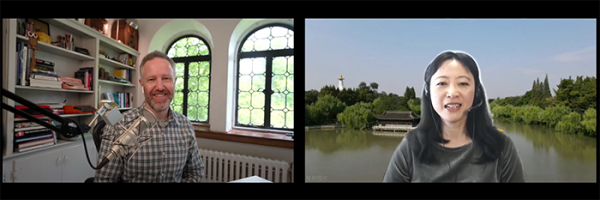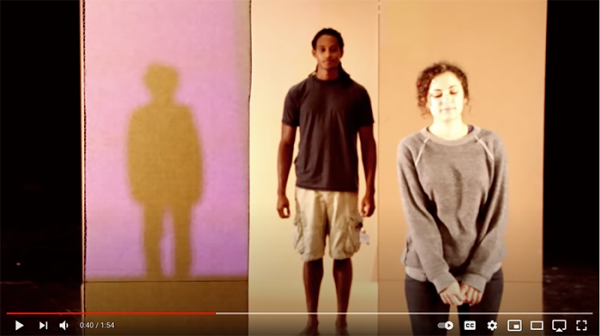So much of the work I do with writers and creators is to help understand how they can effectively share their creative work and their mission with the world. To those who will be moved by it. Helped by it. Feel less alone because of it. Some of this is the internal work of understanding what we want to say and having a system to know how to share it in a manner that feels authentic to who we are. Another aspect of this work is to understand who you hope to reach as a real person, not a faceless audience that will be measured in a numeric value like a “follower” or “subscriber.”
This is where how we create and how we share come together. To me, they are not uniquely separate tasks where one takes off the “writing” hat to put on a “marketing” hat. How we share is representative of who we are and how we connect.
I care less about following trends, and more about the lifelong journey of better understanding who we are, how we can best create, and the way that magic can happen when someone discovers your art.
Today, I simply want to reflect on the journey between those things. How what we create and how we share helps us become who we are. I’ll share this through the stories of people whose work I have been thinking about this week. We can kick it off with a quote from Questlove’s book, Creative Quest:
“If you’re feeling like things aren’t going anywhere, hang out with people from different disciplines.”
Growing up, I was the art kid, and always found myself gravitating towards anyone who creates. It’s a powerful way to find inspiration and connection. So below, I’ll share insights from writers, comics, dancers, and more. Let’s dig in…
“I kept writing because publishing wasn’t my goal. Writing was my goal.“
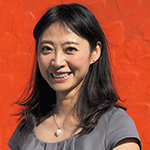 I recently spoke with author Yang Huang about her journey as an author. She has published two novels, a short story collection, as well as essays. Every writer’s path is difficult in some way. For Yang, she grew up in China, in a culture that didn’t allow for her to consider writing as a pursuit. I asked her if she had a sense of permission to create when she was a child, and she replied:
I recently spoke with author Yang Huang about her journey as an author. She has published two novels, a short story collection, as well as essays. Every writer’s path is difficult in some way. For Yang, she grew up in China, in a culture that didn’t allow for her to consider writing as a pursuit. I asked her if she had a sense of permission to create when she was a child, and she replied:
“Actually never. I grew up in China, and back then we were always taught what to think and how to feel at home. I wasn’t even allowed to cry or my parents will mock me. It wasn’t a lack of love, but sheer force of conformity, there was always a right and wrong way to do things, a right or wrong way to feel. The censorship took away the power of imagination. I always knew what people want me to think and say. It got to a point that I knew language was almost pointless because I just give them what they wanted.”
“As I got older… I turned to writing because that’s a private language. I don’t have to conform exactly. Writing was a way for me to have a little bit of space that they [her family and culture around her] can’t quite invade.”
As a child, she was not encouraged to create, yet there were stories inside her.
Yang moved to America to pursue a degree in computer science, and her studies took her from Florida, to Boston, to Seattle, to Arizona. Along the way, she began to write. As her career in computer science became established, she pursued getting her MFA.
Every single writer and artist has their own unique challenges. What inspired me about Yang’s story is her diligence in forging her own path to become who she was all along, even if those around her didn’t see it or encourage it.
You can listen to my full interview with her here, or watch our conversation here:
You can find more about Yang and her books here.
Celebrating Those Who Inspire You
I’ve been watching and rewatching the 1990 video from Janet Jackson for her song “Alright.” It’s a highly choreographed visual story that features entertainers from the golden age of Hollywood. We get a dance routine from Cyd Charisse, who at age 69 moved just as she did decades earlier:
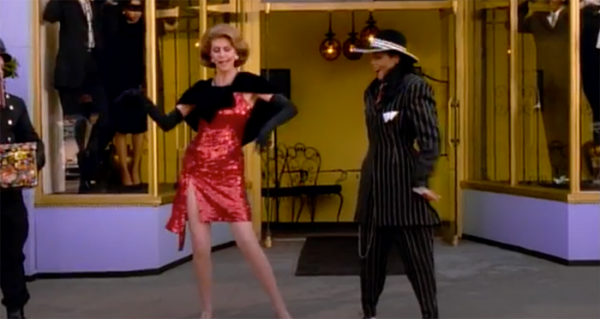
Fayard and Harold Nicholas appeared as well, and much like Cyd, moved just as they did back in the 1940s, even though they were 76 and 69 at the time of filming:
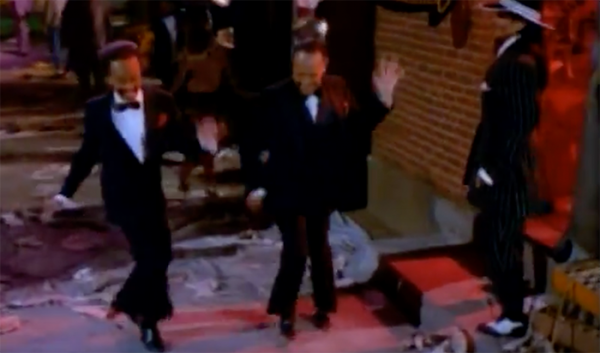
At age 82, the legendary Cab Calloway not only appeared in the video, but is the focal point of the entire storyline:
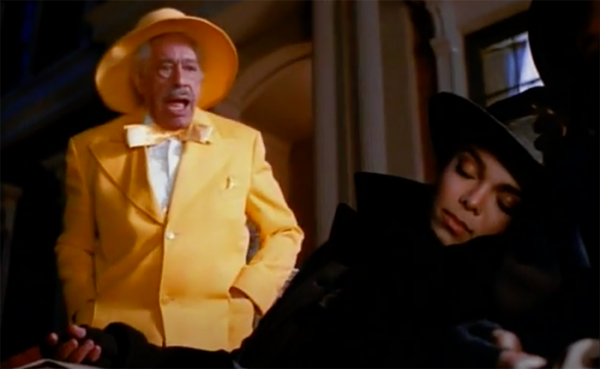
And of course, there is Janet Jackson herself, doing it all — singing, dancing, acting — with a sense of ease that is just incredible.
I spend a lot of time on Wikipedia and YouTube researching performers from different eras of the 20th century. It has me considering the zeitgeist — how there are times in one’s career when the culture recognizes their work, and times they do not. These performers had been out of the limelight for many years, but Janet wanted to showcase them to a new generation.
Remembering and celebrating the work of those who inspire us is an opportunity we all have. To recognize creators whose work may be somewhat forgotten, or to be inspired by it and help their work grow through your own. So much of what we create is inspired by the experiences in our lives and those who have touched us.
On your social media, or as a part of a marketing campaign for your next book, could you use it as an opportunity to celebrate the authors or creators who inspired you? Or, could you look around at other modern day creators whose work you love, and celebrate them? To use your platform and your voice to not only share their creative work, but to truly make that creator’s day?
Imagine what Cab Calloway must have felt in 1990, when at age 82 he learned that Janet wanted to feature him in her new video. His last major media appearance was 8 years earlier, and it had been a full decade since he was prominently featured in the movie The Blues Brothers. Could you help provide that feeling to someone now?
You have the power to make someone feel seen. To have their work feel relevant and validated. Regardless of whether it is someone who has been creating for decades, or is just trying to get their first book published. Why not use that power?
A Lesson from Comedians: Creative Work is Surrounded by Failure.
I’ve watched a series of interviews recently from successful comedians who talked about how much failure is a part of their daily work, and their career overall. In hearing this again and again, I felt like the idea of accepting this opens up huge possibilities. Instead of being concerned about the validation from others, knowing that failure is part of the process may help you feel motivated to create and share even more. Some of what I heard:
- Seth Green talks about all the failed projects he’s been a part of, and how very often, you have no idea which projects will fail or not, regardless of how you feel about them.
- Jerry Seinfeld talks about the famous note from an NBC executive turning down the concept for the Seinfeld TV show. He reflects that at that time, he had been on the Tonight Show 3 times per year for 7 years, and each time he was wildly successful. Yet he was surprised that NBC reacted as: “Who’s this guy?! This guy wants a show?” No matter how hard he worked, how successful he was, he still found people who wouldn’t take him seriously.
- Tina Fey and Conan O’Brien talked about how they still have anxiety about their time at SNL, and that the experience working there pushes people over the edge. She shared the routines she formed in those years, saying to herself as she commuted to work: “When you get off the train you have to get off on the same side, and walk around this pillar, otherwise your sketch on the show will tank.”
- Chris Rock shared how he felt his career was over in the years between SNL and then succeeding as a standalone comic: “In 1995, I was washed up, I had no career. I was out of the business. Nobody would talk to me.”
It’s easy to look at the Wikipedia page for each of these people and only see success, yet they talk about how much of their life has been filled with failure. An idea not working, a project going nowhere, people not picking up their calls, them not getting chosen. But they kept working and through that, things worked out.
Fitting In
I sometimes find that when someone is trying to establish their platform, they are vying to fit in to the marketplace. They want to learn the “best practices” so that they can use social media and be online just as other writers and artists are. And of course, there is value in that. But I would encourage you to take a different approach: to become who you are and learn to share that with authenticity online.
I have shared the following video many times over the years, and I always come back to it when I consider what it means to be public with your creative work. It’s an old video by Ze Frank called “Fitting In.” You can watch it here:
He states in the video:
“When I was younger I had this feeling that there was this handbook that I’d never gotten,
that explained how to be, how to laugh, what to wear,
how to stand by yourself in a hallway.
Everyone else looks so natural, like they’d all practiced together and knew exactly what to do. My experience was pretty much the opposite.”
“So I tried to pick up the patterns.
I wore what they wore, and said what they said. I even wrote “smile more” on a sticky note. And over time it sort of worked in a way. I made a version of me that fit in.”
“As I grew older the patterns kept changing, and it took so much effort to keep learning them. I was still stuck with the problem that it started with, being terrified of the moment when my tricks stop working.”
“I think it took me too long to learn something: that even though there is a thing called “fitting in,” that it’s something that you can learn and practice,
those pages or so thin compared to who you are. That the way to become natural like I wanted to be so badly, is by forgetting what you’re trying to be to other people. And if there is a handbook, you probably get to write it yourself.”
Thanks!
-Dan

